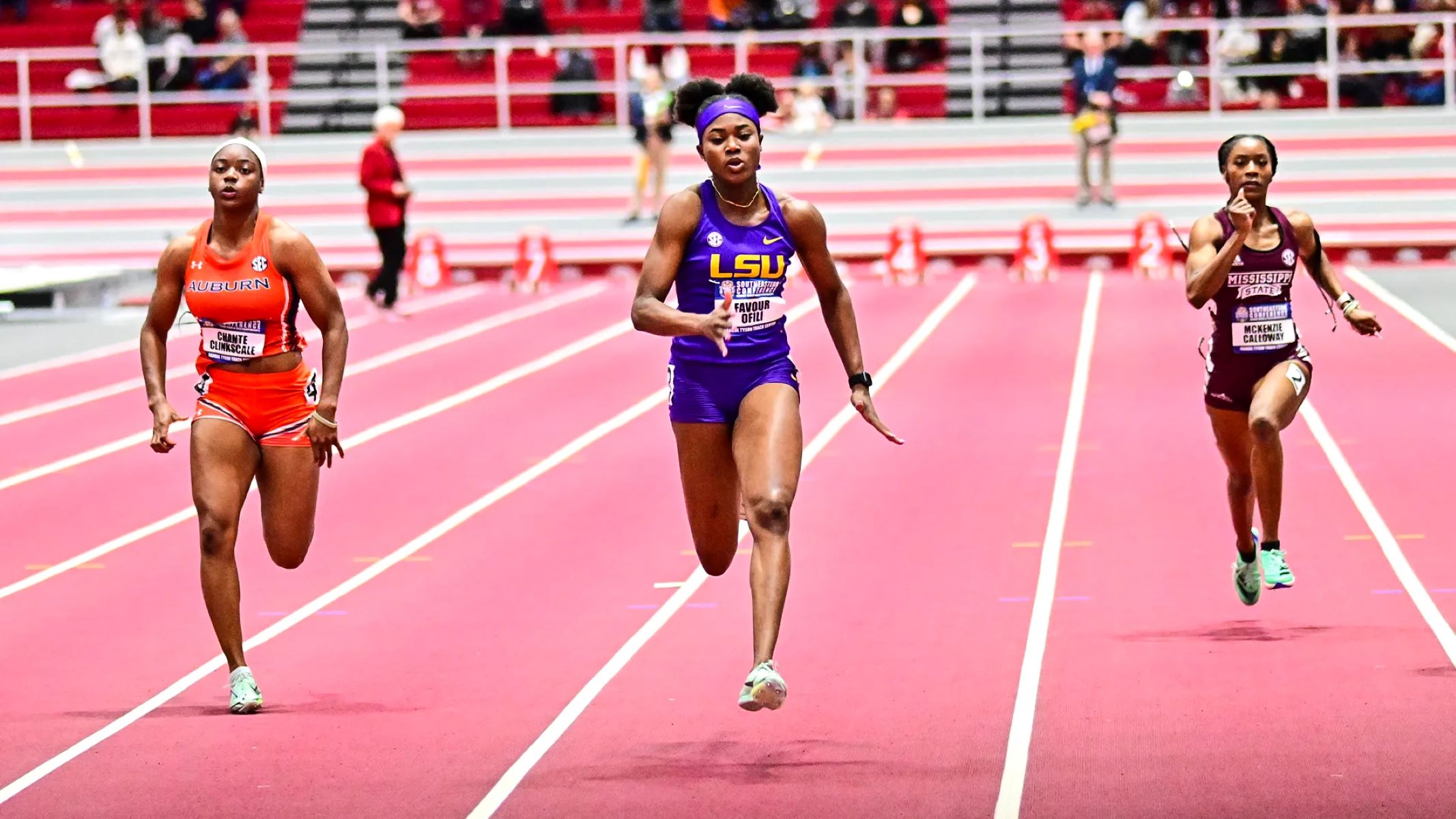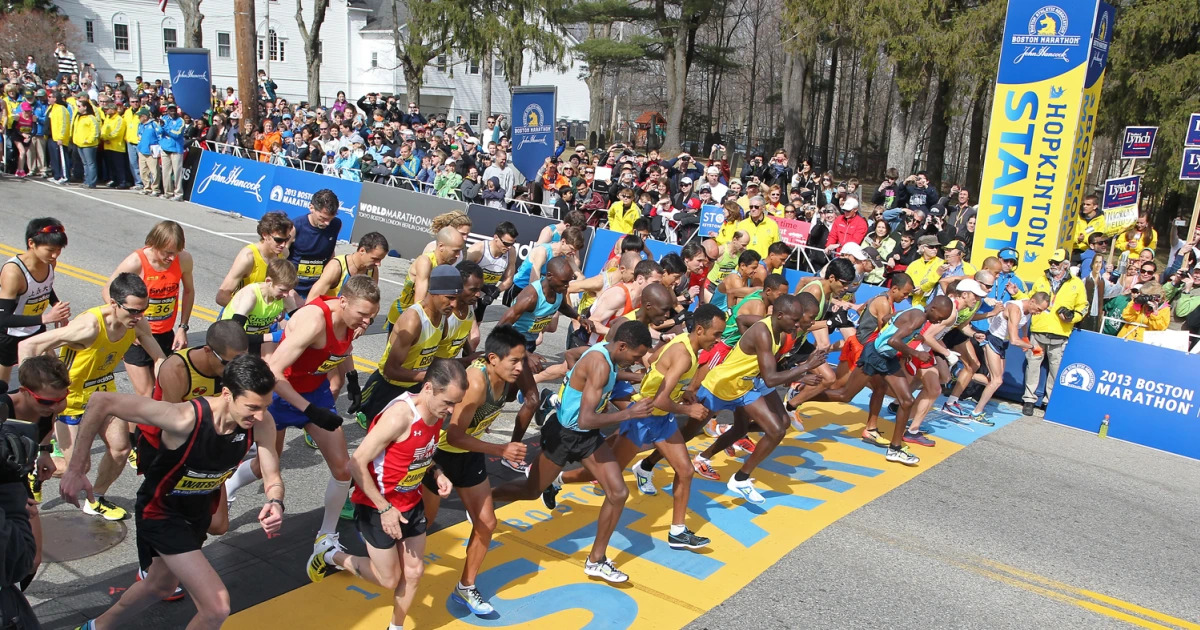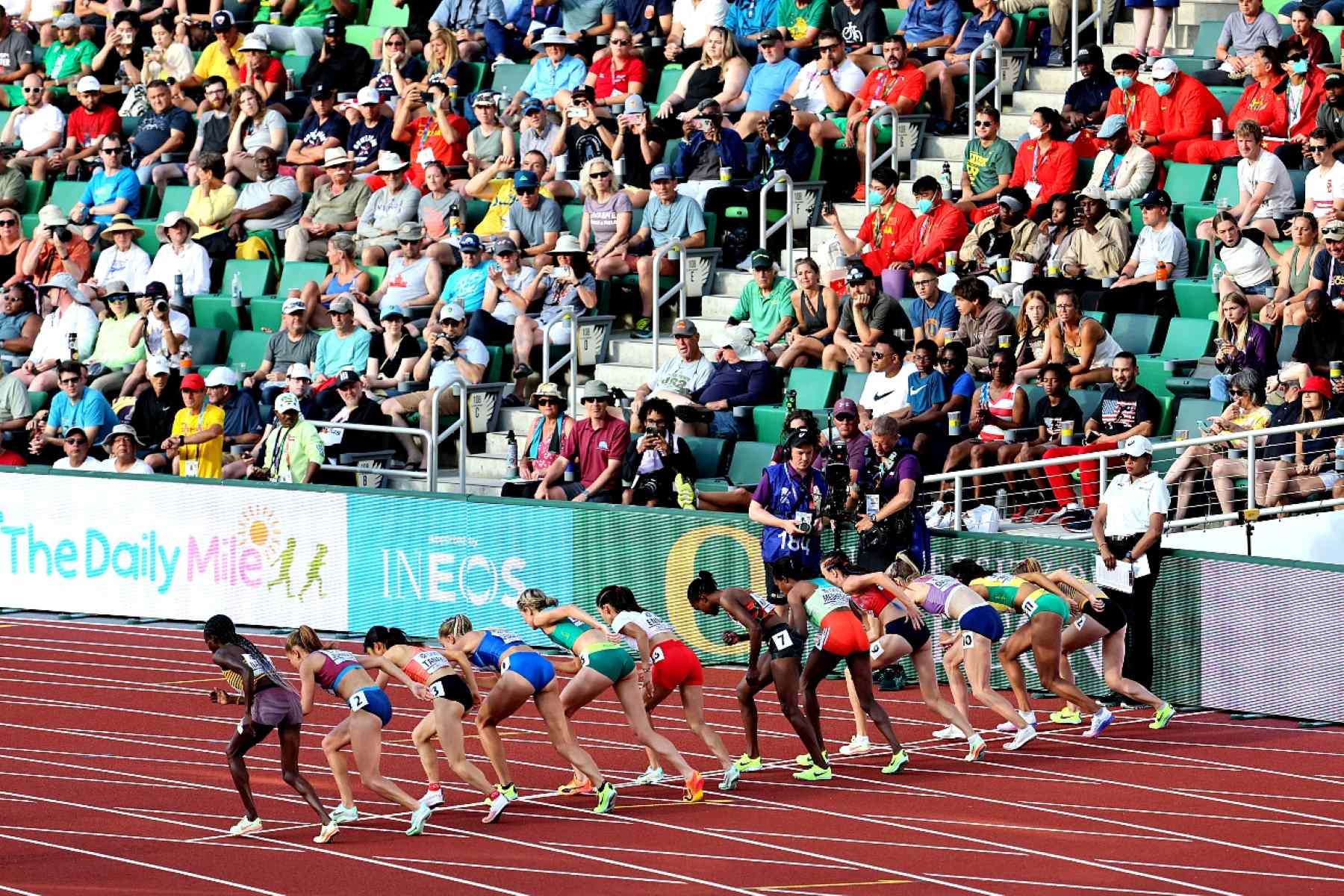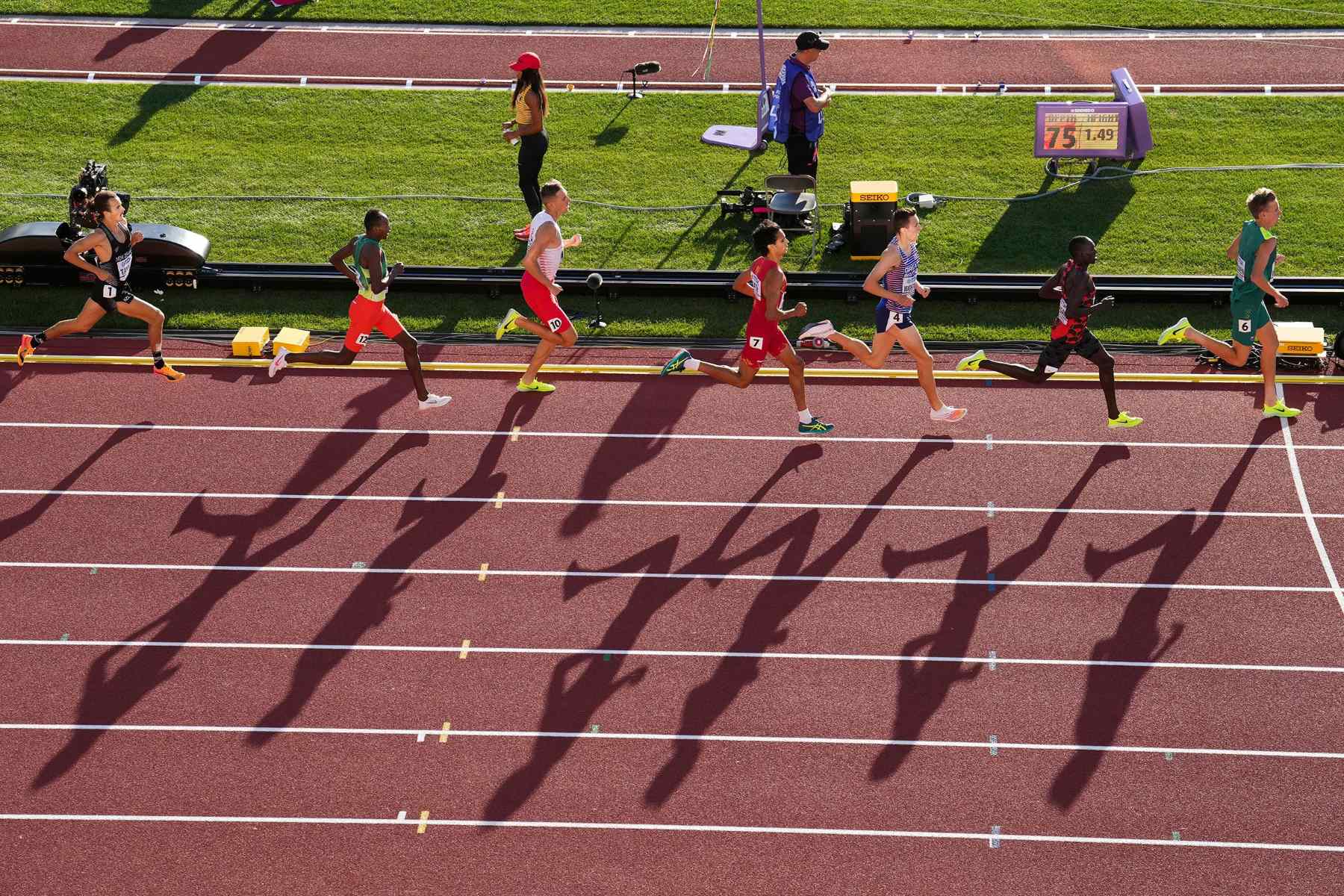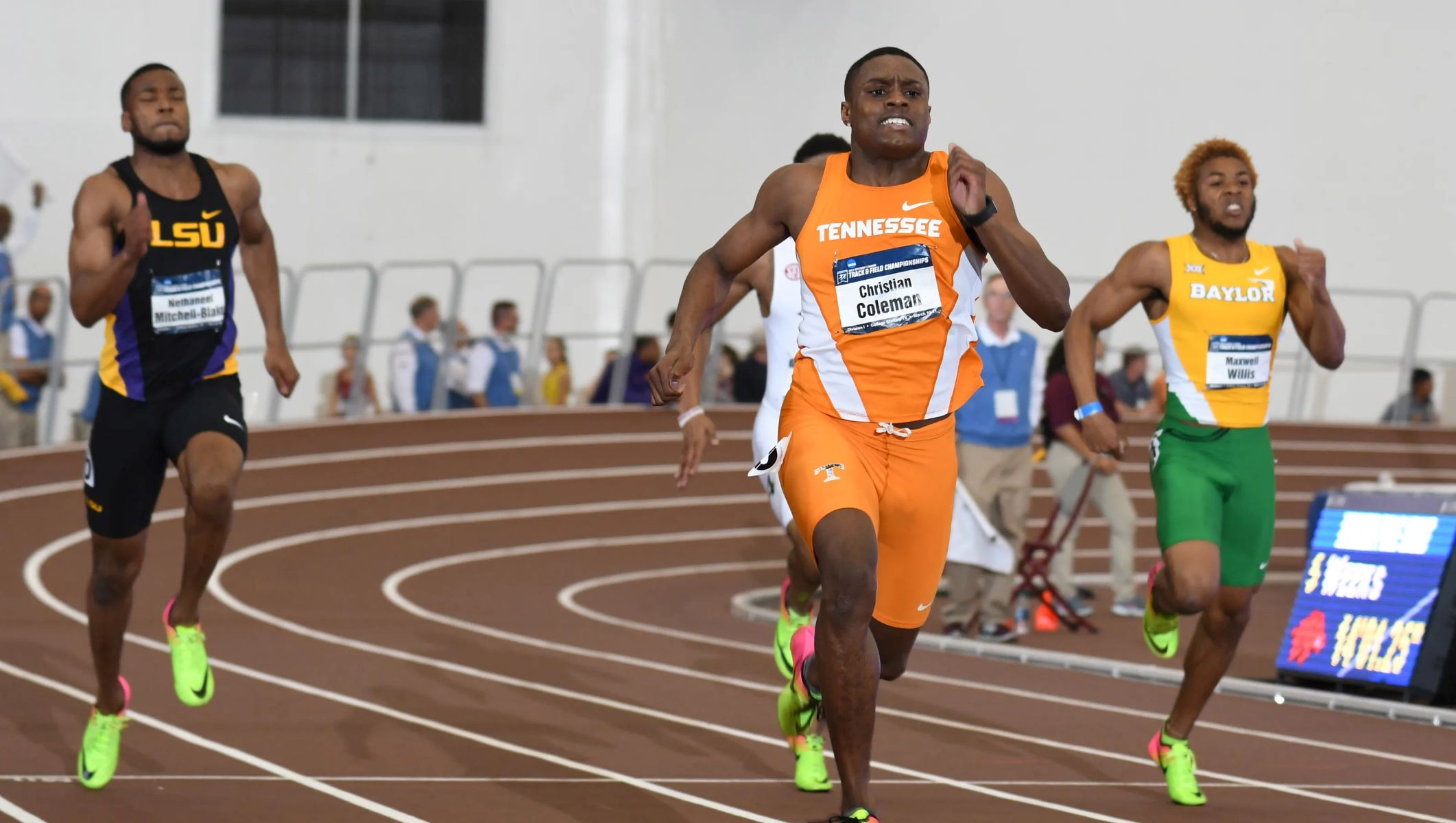Home>Misc>Featured>What Are The Remote Controlled Cars On The Field During Track And Field Events?
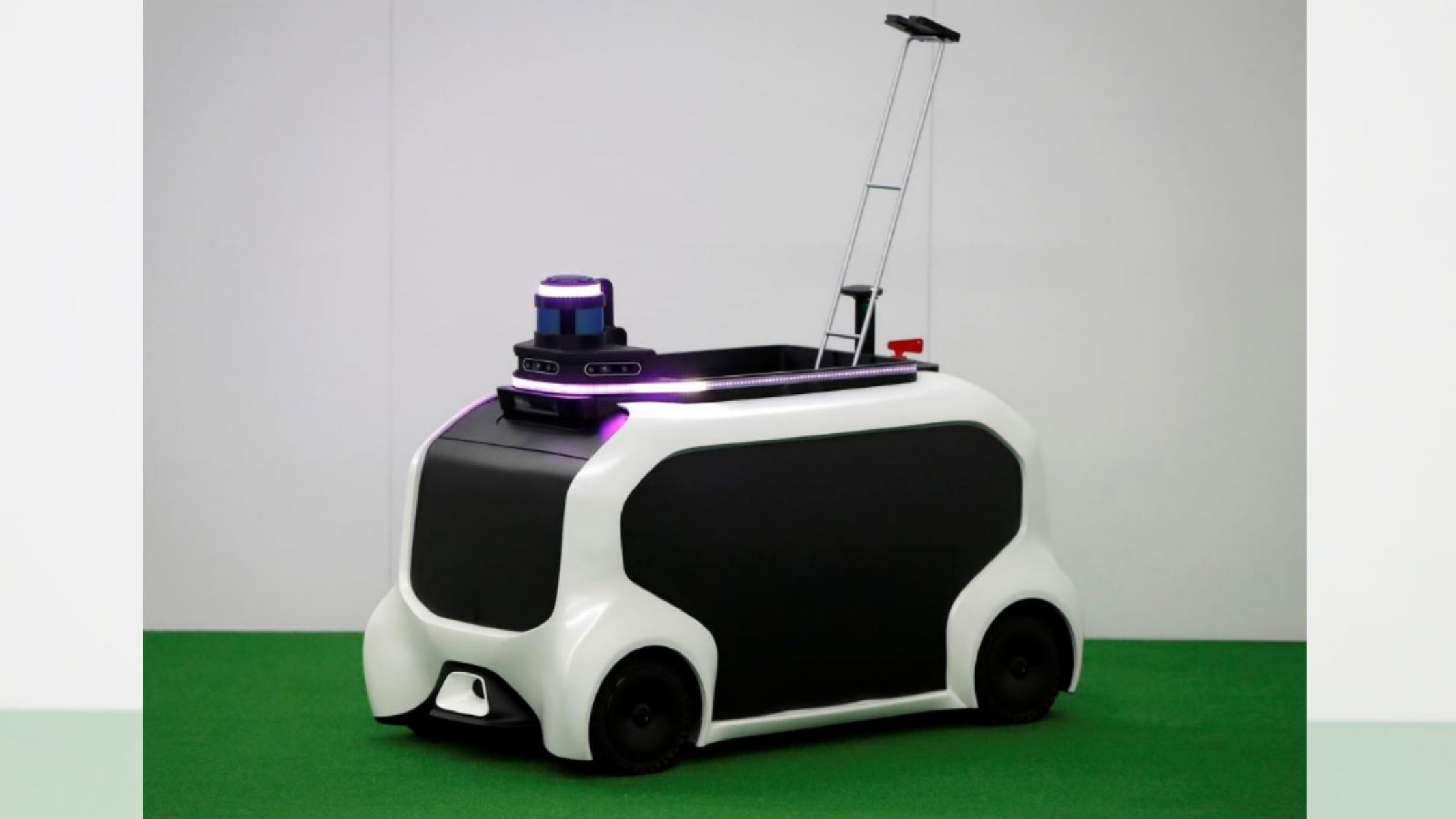

Featured
What Are The Remote Controlled Cars On The Field During Track And Field Events?
Modified: January 2, 2024
Discover the latest featured remote controlled cars used during track and field events. Experience the excitement of these advanced vehicles on the field.
Introduction
Track and field events have always been a thrilling sport to watch. Athletes pushing their limits, breaking records, and showcasing their athletic prowess are a sight to behold. However, have you ever wondered about those remote controlled cars often seen on the field during track and field events? These miniature vehicles play a vital role in ensuring the smooth running of the competition.
In this article, we will explore the types of remote controlled cars used in track and field events, their purpose and function, as well as the features and specifications that make them efficient. Additionally, we will delve into the benefits and advantages of using remote controlled cars, along with any challenges or limitations they may present. Safety measures and precautions that should be taken while operating these cars will also be discussed. Lastly, we will touch upon the future development and potential of remote controlled cars in the realm of track and field events.
Remote controlled cars are not just toys, but crucial tools that aid in the successful execution of various aspects of track and field competitions. From marking distances to transporting equipment, these miniature vehicles play a significant role behind the scenes, ensuring the event runs smoothly while enhancing spectator experience. So, let’s dive into the fascinating world of remote controlled cars on the field during track and field events.
Types of Remote Controlled Cars Used in Track and Field Events
When it comes to track and field events, there are various types of remote controlled cars that serve specific purposes. Let’s take a closer look at some of the most commonly used ones:
- Marker Cars: These cars are equipped with a device that leaves a temporary mark on the ground, indicating the positions of athletes in various field events such as long jump, triple jump, and javelin throw. The marks help in accurately measuring the distances covered by the athletes during their attempts.
- Supply Cars: These cars are responsible for transporting equipment and supplies needed for the smooth operation of the event. From delivering javelins, shot puts, and discuses to distributing starting blocks and hurdles, supply cars ensure that the required items are readily available to the athletes when needed.
- Camera Cars: Equipped with cameras, these remote controlled cars capture high-quality footage of the track events, providing spectators with a close-up view of the action. These shots are often displayed on large screens in the stadium, giving the audience a more immersive experience.
- Timing Cars: These cars are outfitted with precise timing systems that synchronize with the start and finish lines. They accurately record the exact time at which a race begins and ends, allowing for precise measurement of athletes’ performance and determining race winners.
- Emergency Cars: Safety is of utmost importance in any sporting event. Emergency cars are equipped with medical supplies and can swiftly navigate the track and field area in case of any injury or medical emergency. Their quick response can ensure timely medical attention to athletes if needed.
Each type of remote controlled car serves a specific function and contributes to the overall efficiency and accuracy of track and field events. Together, they work seamlessly to provide a well-organized and exhilarating experience for both athletes and spectators.
Purpose and Function of Remote Controlled Cars
Remote controlled cars are not merely toys but essential tools that serve a variety of purposes in track and field events. Let’s explore the primary functions of these cars:
- Efficiency and Accuracy: One of the main purposes of remote controlled cars is to ensure the smooth and efficient execution of the event. From marking distances to transporting equipment, these vehicles help maintain accuracy in measurements and timely delivery of necessary items, minimizing any disruptions or delays.
- Precision Measurement: Remote controlled cars equipped with marking devices play a crucial role in accurately measuring the distances covered by athletes in field events. They leave temporary marks on the ground, allowing officials to precisely determine the performance of the participants and ensure fair competition.
- Spectator Experience: Another important function of remote controlled cars is to enhance the overall spectator experience. Camera cars equipped with high-quality cameras capture close-up shots of the track events, providing a more immersive view for the audience. These shots can be displayed on large screens in the stadium, adding to the excitement and engagement of the spectators.
- Safety and Emergency Response: Remote controlled cars, especially emergency cars, are equipped with medical supplies and can swiftly reach any area of the track and field in case of an injury or medical emergency. They ensure quick response and timely medical attention to athletes who may require immediate assistance, prioritizing their safety during the event.
- Efficient Supply Management: Supply cars play a vital role in delivering necessary equipment and supplies to athletes. They ensure that items such as javelins, shot puts, starting blocks, and hurdles are readily available when needed, minimizing any disruptions or delays in the competition.
Overall, remote controlled cars significantly contribute to the efficiency, accuracy, and safety of track and field events. Their functions ranging from precise measurement to enhancing the spectator experience make them indispensable tools for organizers, officials, athletes, and the audience alike.
Features and Specifications of Remote Controlled Cars
Remote controlled cars used in track and field events are designed with specific features and specifications to ensure their effectiveness and smooth operation. Let’s explore some of the key characteristics of these vehicles:
- Compact and Lightweight: Remote controlled cars are typically designed to be compact and lightweight, allowing them to maneuver easily on the track and field. This enables them to navigate through tight spaces, reach different areas of the field, and quickly respond to changing requirements during the event.
- Durable and Weather-Resistant: These cars are built to withstand the demanding conditions of outdoor track and field events. They are constructed using durable materials that can endure rough terrains, varying weather conditions, and occasional impacts, ensuring their longevity and reliability.
- Precision Control System: Remote controlled cars incorporate advanced control systems that provide precise movements and responsiveness. This allows operators to have fine control over the speed, direction, and turning radius of the vehicles, ensuring accurate positioning and marking of the field.
- Long Battery Life: To ensure uninterrupted operation during extended track and field events, remote controlled cars are equipped with long-lasting batteries. This allows them to perform their functions without the need for frequent recharging or battery replacements, minimizing any disruptions in the event.
- Wide Range of Motion: These vehicles are designed with a wide range of motion, allowing them to navigate effortlessly around the track and field. They are capable of moving forwards, backward, sideways, and even rotating, enabling them to reach different areas of the field efficiently.
- Easy Maintenance and Upkeep: Remote controlled cars are designed with ease of maintenance in mind. They often have accessible compartments for battery replacement and require minimal upkeep. This ensures that operators can quickly address any issues and keep the vehicles operational throughout the event.
These features and specifications not only enhance the performance of remote controlled cars but also contribute to their reliability, accuracy, and durability in the demanding environment of track and field events. The combination of compact design, precision control, long battery life, and weather-resistant construction makes these vehicles efficient tools for track and field event organizers and officials.
Benefits and Advantages of Using Remote Controlled Cars in Track and Field Events
The use of remote controlled cars in track and field events offers numerous benefits and advantages. Let’s explore some of them:
- Efficiency and Accuracy: Remote controlled cars contribute to the overall efficiency and accuracy of track and field events. They ensure precise marking of distances, timely transportation of equipment, and accurate timing of races, reducing the risk of errors or discrepancies in the competition.
- Enhanced Spectator Experience: The presence of remote controlled cars on the field adds an element of excitement and engagement for spectators. Camera cars capture close-up shots of the action, providing a more immersive view of the track events. This heightens the overall spectator experience, making the event more enjoyable and captivating.
- Quick Response to Emergencies: Remote controlled cars, specifically the emergency cars, play a crucial role in ensuring the safety of athletes. With their ability to swiftly navigate through the track and field area, they can quickly reach any location in case of an injury or medical emergency. This allows for prompt medical attention and aid to be provided, minimizing the impact on the athlete’s well-being.
- Improved Organization: The use of remote controlled cars helps in optimizing the organization of track and field events. Supply cars efficiently transport equipment and supplies, ensuring that the right items are readily available when needed. This minimizes disruptions and delays, leading to a smoother flow of the competition.
- Precision Measurement and Timing: Remote controlled cars equipped with marking devices and timing systems enable accurate measurement of distances and precise timing of races. This ensures fair competition, as well as reliable performance data for athletes, coaches, and officials to analyze and evaluate.
- Cost-Effective Solution: Implementing remote controlled cars in track and field events can be a cost-effective solution. These vehicles often require minimal maintenance and upkeep, reducing the overall expenses associated with the event organization. They also streamline logistical processes, resulting in more efficient use of resources.
Overall, the use of remote controlled cars in track and field events enhances efficiency, accuracy, safety, and the overall experience for both participants and spectators. The combination of their various benefits and advantages makes these vehicles invaluable tools for successful and enjoyable track and field competitions.
Challenges and Limitations of Remote Controlled Cars in Track and Field Events
While remote controlled cars bring numerous benefits to track and field events, they also come with some challenges and limitations. Let’s explore some of the key considerations:
- Technical Limitations: Remote controlled cars rely on various technologies, and technical malfunctions can occur. Issues with control systems, battery life, or communication can interrupt the smooth operation of the vehicles. Adequate maintenance and regular testing are necessary to minimize any technical challenges.
- Interference: The presence of multiple remote controlled cars on the field can lead to potential interference. Signal interference or clashes between vehicles can affect their movement and functionality. Careful planning and coordination are required to mitigate the risk of interference, ensuring the uninterrupted operation of the cars.
- Weather Conditions: Inclement weather such as rain, strong winds, or extreme heat can pose challenges for remote controlled cars. The vehicles need to be designed to withstand harsh weather conditions, or alternative measures should be in place to ensure their operation is not affected by adverse weather.
- Operator Skill and Training: Operating remote controlled cars requires skill and training. Operators need to be proficient in handling the vehicles, especially in precise maneuvering and control. Adequate training programs and regular practice sessions should be conducted to ensure operators are competent in their roles.
- Limited Capacity: Remote controlled cars have limited carrying capacity, which means they may not be able to transport large or heavy equipment. This can pose challenges when it comes to delivering certain items to the athletes or officials during the event. Alternative methods or supplementary support may be required for such cases.
- Cost and Investment: Implementing a fleet of remote controlled cars can involve a significant initial investment. The cost of purchasing the vehicles, training operators, and performing maintenance can be substantial. Event organizers need to carefully assess the benefits against the associated costs before deciding to incorporate remote controlled cars.
Despite these challenges and limitations, with proper planning, maintenance, and training, the use of remote controlled cars can greatly enhance the efficiency and overall experience of track and field events.
Safety Measures and Precautions for Operating Remote Controlled Cars
Operating remote controlled cars in track and field events requires adherence to certain safety measures and precautions to ensure the well-being of both operators and participants. Let’s explore some essential guidelines:
- Operator Training: Operators should undergo comprehensive training on the proper use and handling of remote controlled cars. This training should cover aspects such as vehicle operation, control systems, safety protocols, and emergency procedures.
- Clear Communication: Operators must have effective communication with officials, athletes, and other personnel involved in the event. Clear instructions and signals should be established to facilitate smooth coordination and minimize the risk of accidents or confusion.
- Designated Operating Areas: It is crucial to designate specific operating areas for remote controlled cars. This helps minimize the risk of collisions with athletes or other vehicles. Operators should strictly adhere to these areas and avoid any unauthorized deviations.
- Regular Inspections: Remote controlled cars should undergo regular inspections to ensure their proper functioning. This includes checking the control systems, battery life, and overall vehicle condition. Any issues or malfunctions should be promptly addressed and resolved.
- Weather Considerations: Operators should assess weather conditions before and during the event. Extreme weather conditions, such as heavy rain or strong winds, can affect the stability and control of remote controlled cars. In adverse weather, operators may need to consider suspending their operations temporarily to avoid potential accidents.
- Safe Speeds: Operators should maintain safe speeds when operating remote controlled cars. Excessive speed can compromise control and reaction times, increasing the risk of accidents or collisions. It is important to strike a balance between efficiency and safety.
- Emergency Preparedness: Operators should be well-prepared for emergencies and have a clear understanding of emergency procedures. This includes having emergency contact information readily available and knowing how to respond in cases of medical emergencies or equipment malfunctions.
- Spectator Safety: Spectator safety should be a top priority. Barriers or designated areas should be in place to ensure spectators are kept at a safe distance from the remote controlled cars’ operating areas. Clear signage and instructions should also be provided to guide spectators and prevent any unauthorized access.
- Proper Storage and Transport: When not in use, remote controlled cars should be stored properly to protect them from damage. During transport to and from the event, secure packaging or storage containers should be used to prevent any impacts or jolts that could affect the vehicles’ functionality.
By following these safety measures and precautions, operators can ensure the safe and effective operation of remote controlled cars in track and field events, minimizing the risk of accidents and enhancing overall event safety.
Future Development and Potential of Remote Controlled Cars in Track and Field Events
The use of remote controlled cars in track and field events has already revolutionized the way these competitions are organized and executed. However, there is still significant potential for future development and advancements in this field. Here are some areas where remote controlled cars can continue to evolve:
- Advanced Technology Integration: As technology continues to advance, we can expect remote controlled cars to incorporate even more advanced features. This could include improved control systems, enhanced battery life, and more precise measurement tools, further enhancing their performance and accuracy.
- Smart Automation: Automation and artificial intelligence can play a significant role in the future development of remote controlled cars. Advanced algorithms and programming can enable these vehicles to autonomously navigate through the track and field, adapt to changing conditions, and make more intelligent decisions.
- Multi-Purpose Functionality: Remote controlled cars can be designed to serve multiple functions, beyond the current specific roles they play. For example, a single vehicle could combine marking capabilities, supply transportation, and camera capture, streamlining operations and reducing the number of vehicles needed on the field.
- Improved Safety Features: Safety measures can be further enhanced in future remote controlled cars. This could include collision avoidance systems, emergency response features, and improved communication capabilities to ensure the safety of both operators and participants during the event.
- Real-time Data Analysis: With the advancement of data analytics, remote controlled cars can be equipped with sensors that collect and analyze real-time data during track and field events. This information can help coaches, athletes, and officials make more informed decisions and gain deeper insights into performance and strategy.
- Environmental Considerations: Future remote controlled cars could be designed with a focus on sustainability and environmental impact. This may include the use of eco-friendly materials, energy-efficient systems, and the reduction of carbon emissions during operation.
The potential for future development of remote controlled cars in track and field events is vast. These advancements have the potential to further enhance the efficiency, precision, and overall experience of both athletes and spectators, taking this sport to new heights.
Conclusion
Remote controlled cars have become integral to the world of track and field events, playing various roles to ensure efficiency, accuracy, and spectator engagement. Their compact design, precise control systems, and range of functions have revolutionized the way these competitions are organized and executed. From marking distances to transporting equipment, capturing footage, and ensuring athlete safety, these vehicles are essential tools behind the scenes.
Despite challenges such as technical limitations and weather conditions, remote controlled cars offer numerous benefits. They enhance the overall efficiency and accuracy of track and field events, provide a captivating spectator experience, and contribute to athlete safety. These vehicles have the potential to further develop with advances in technology, incorporating automation, improved safety features, and real-time data analysis.
However, it is vital to prioritize safety measures and adhering to proper operating protocols. This includes operator training, clear communication, regular inspections, and adequate weather-related considerations. By following these precautions, the successful operation of remote controlled cars can be ensured while minimizing risks.
In conclusion, remote controlled cars have become indispensable tools in track and field events. Their ongoing development and potential advancements will continue to enhance the efficiency, accuracy, and overall experience of these competitions. By striking a balance between technological innovation and safety measures, these vehicles will play a vital role in shaping the future of track and field events.
